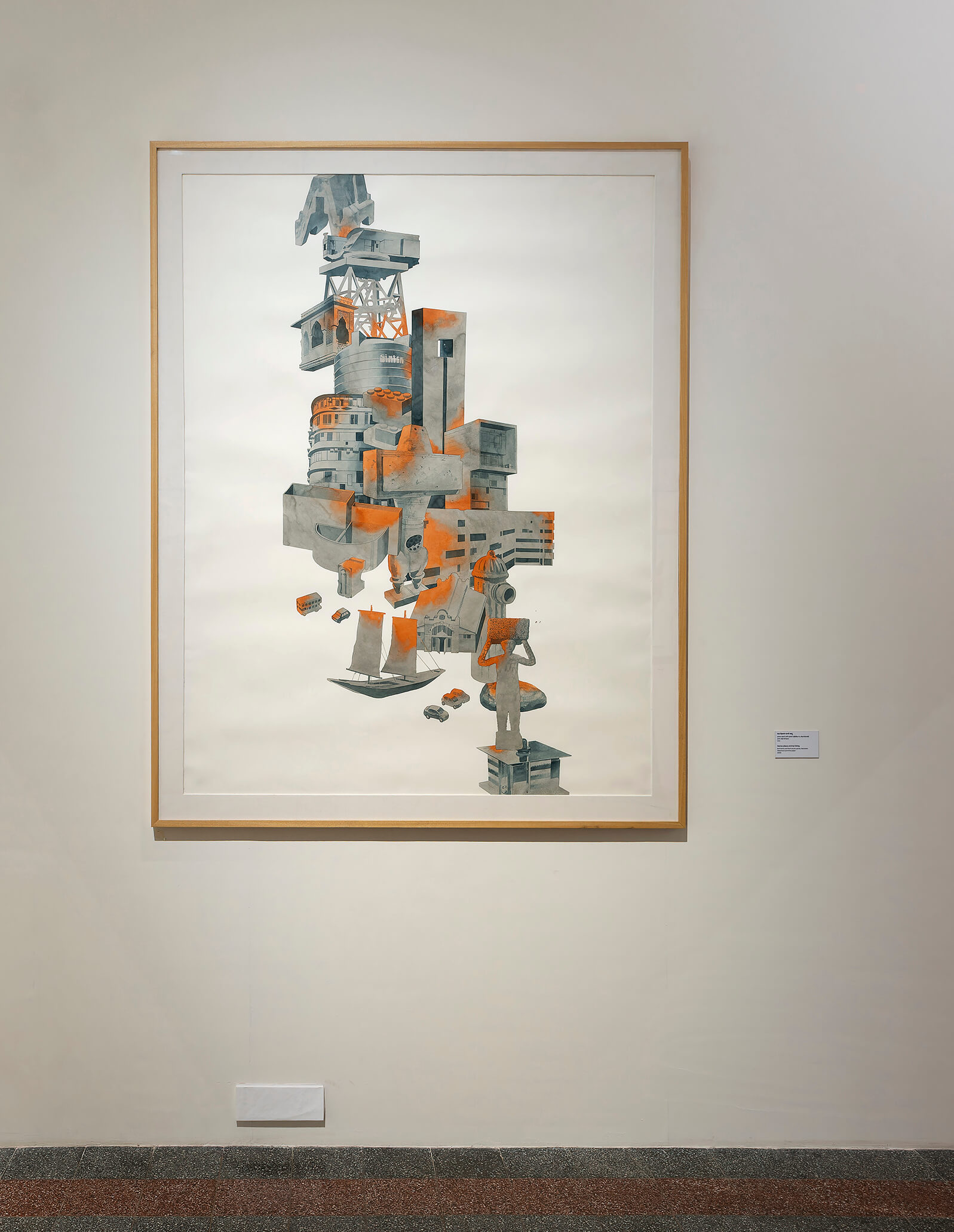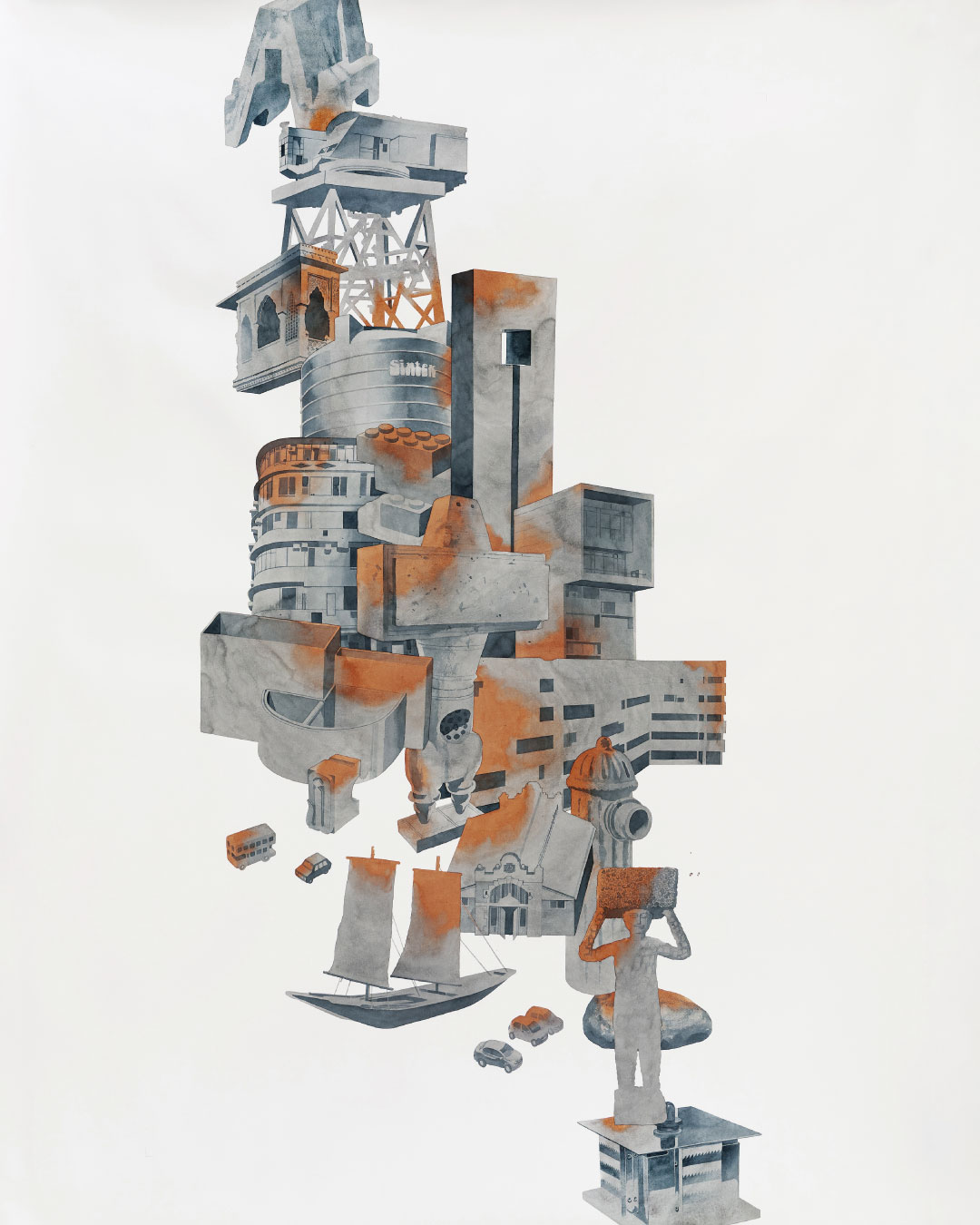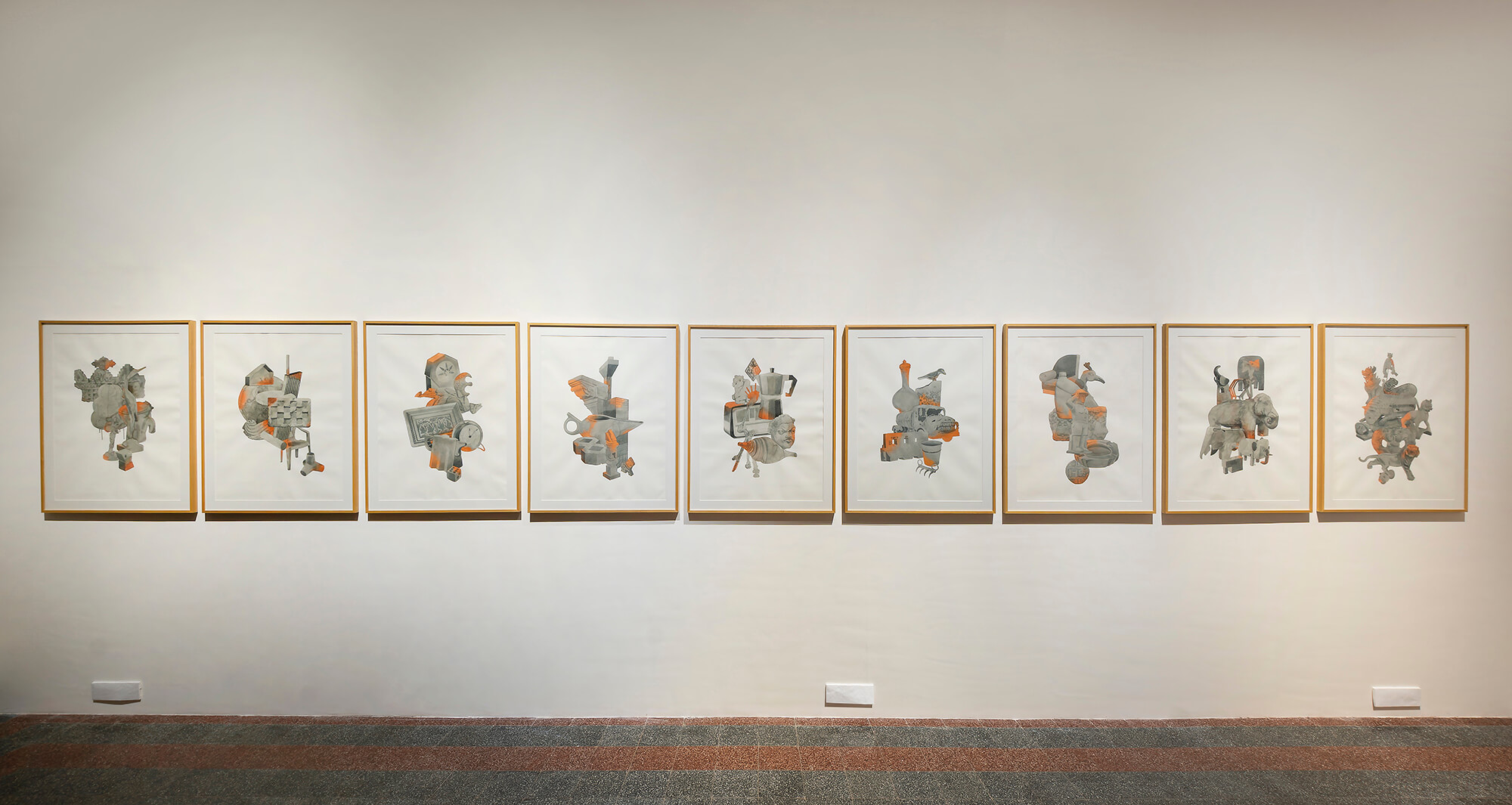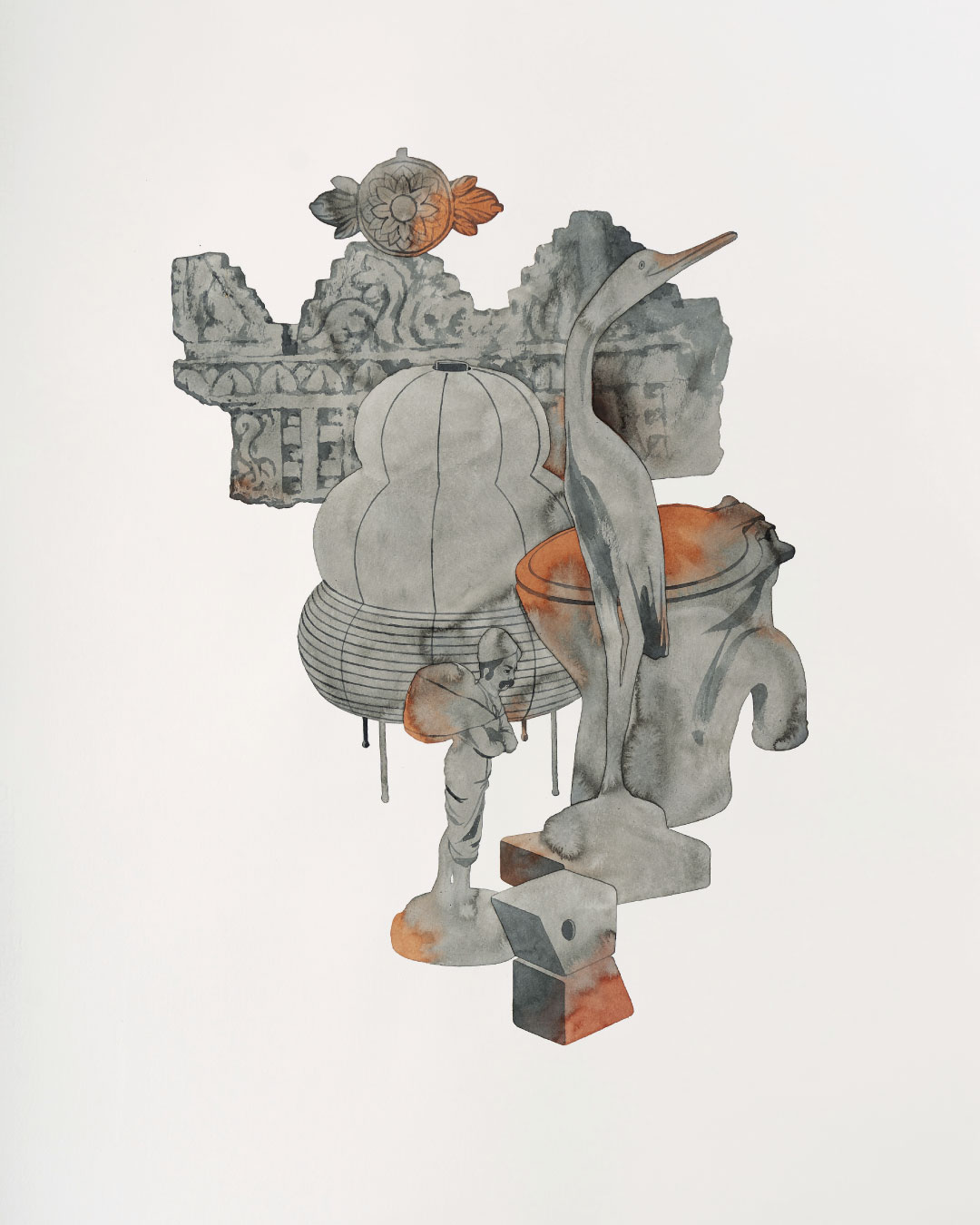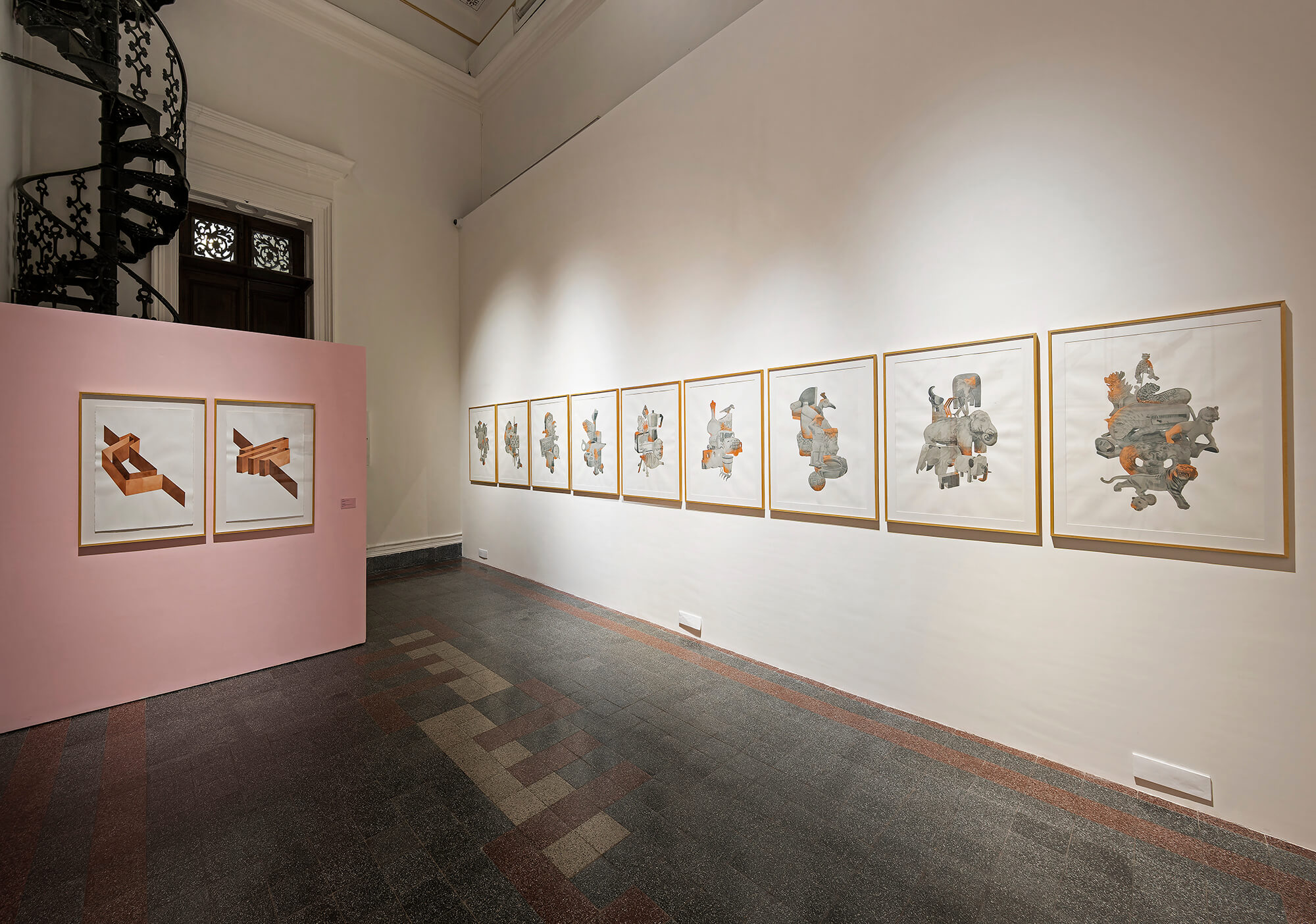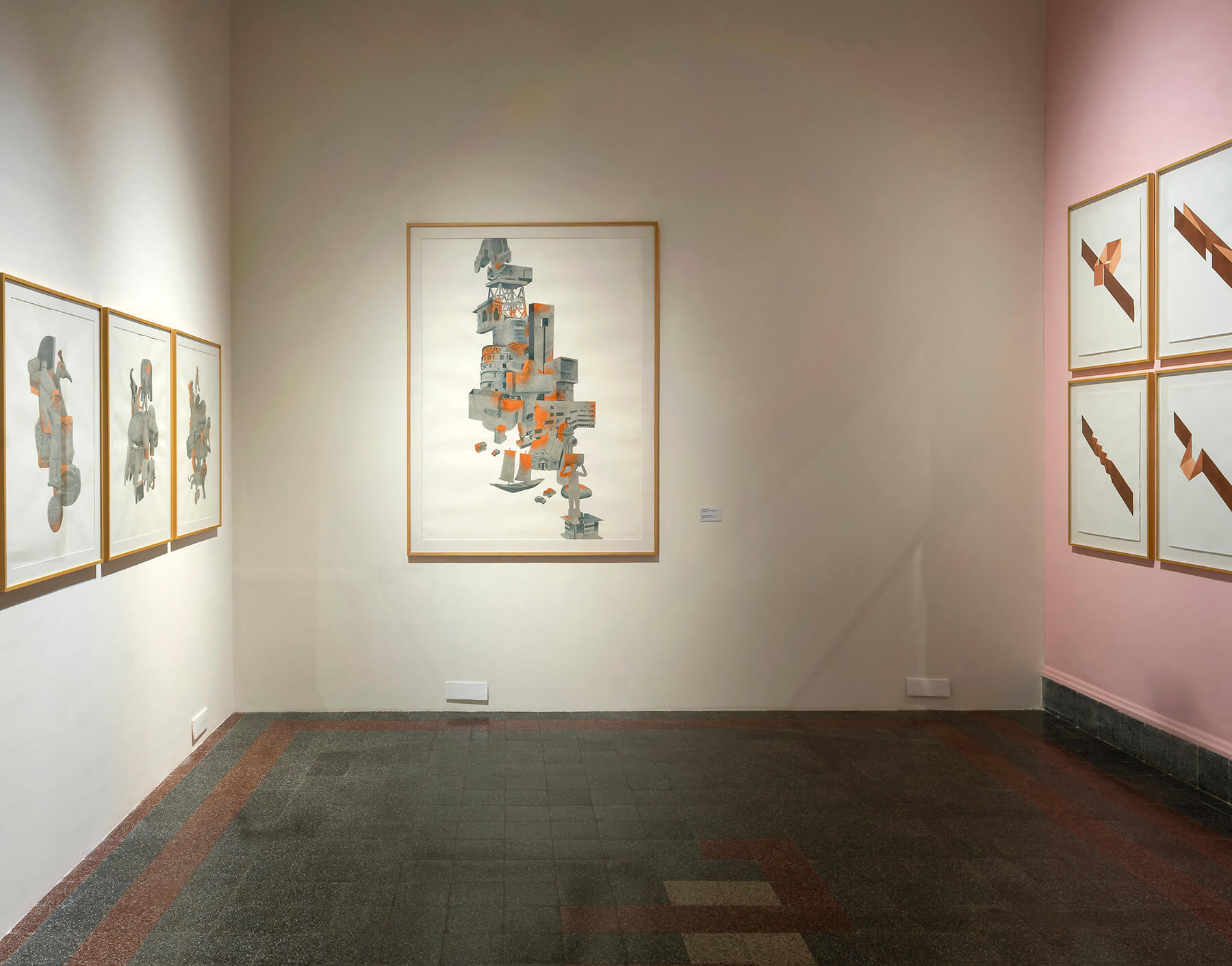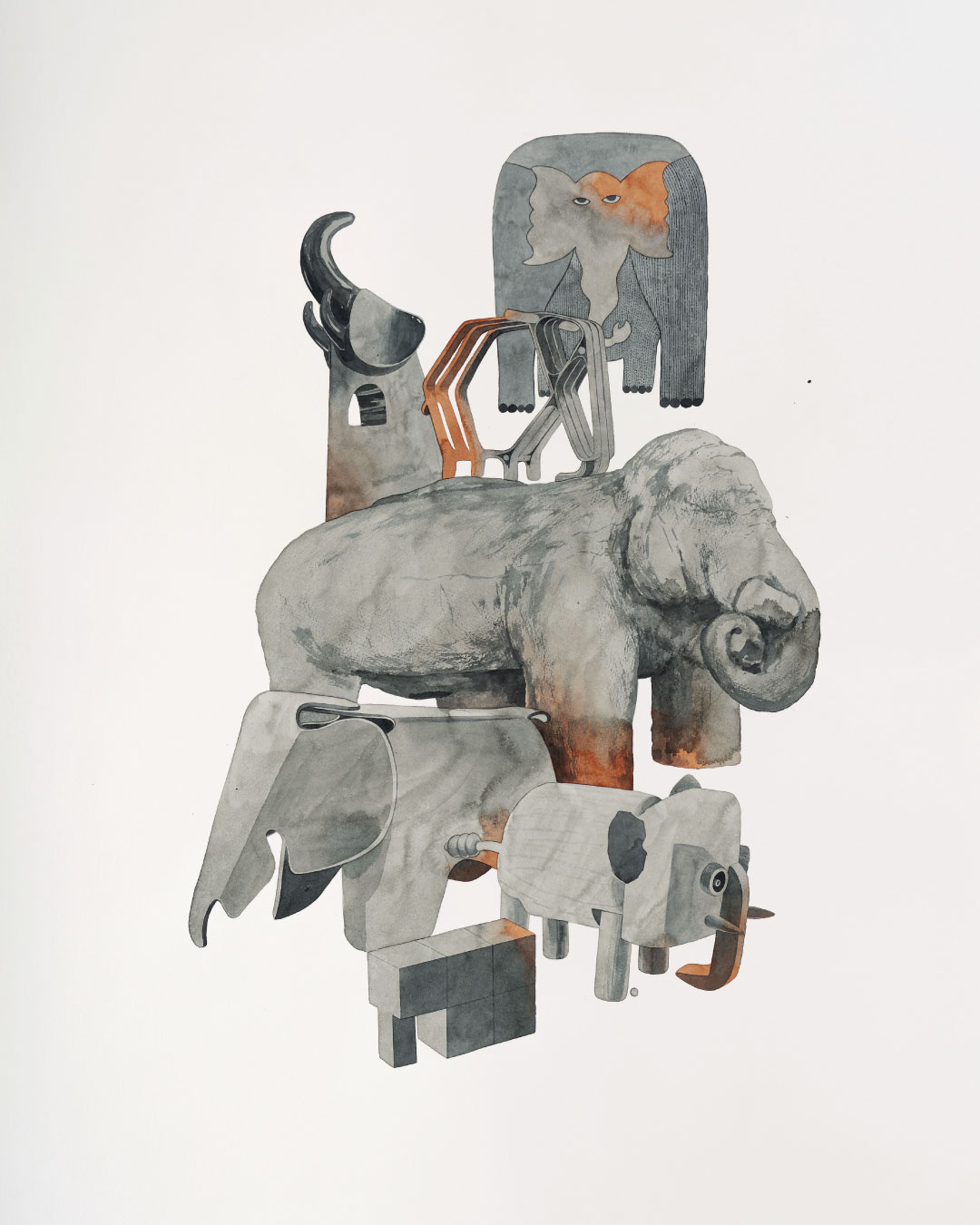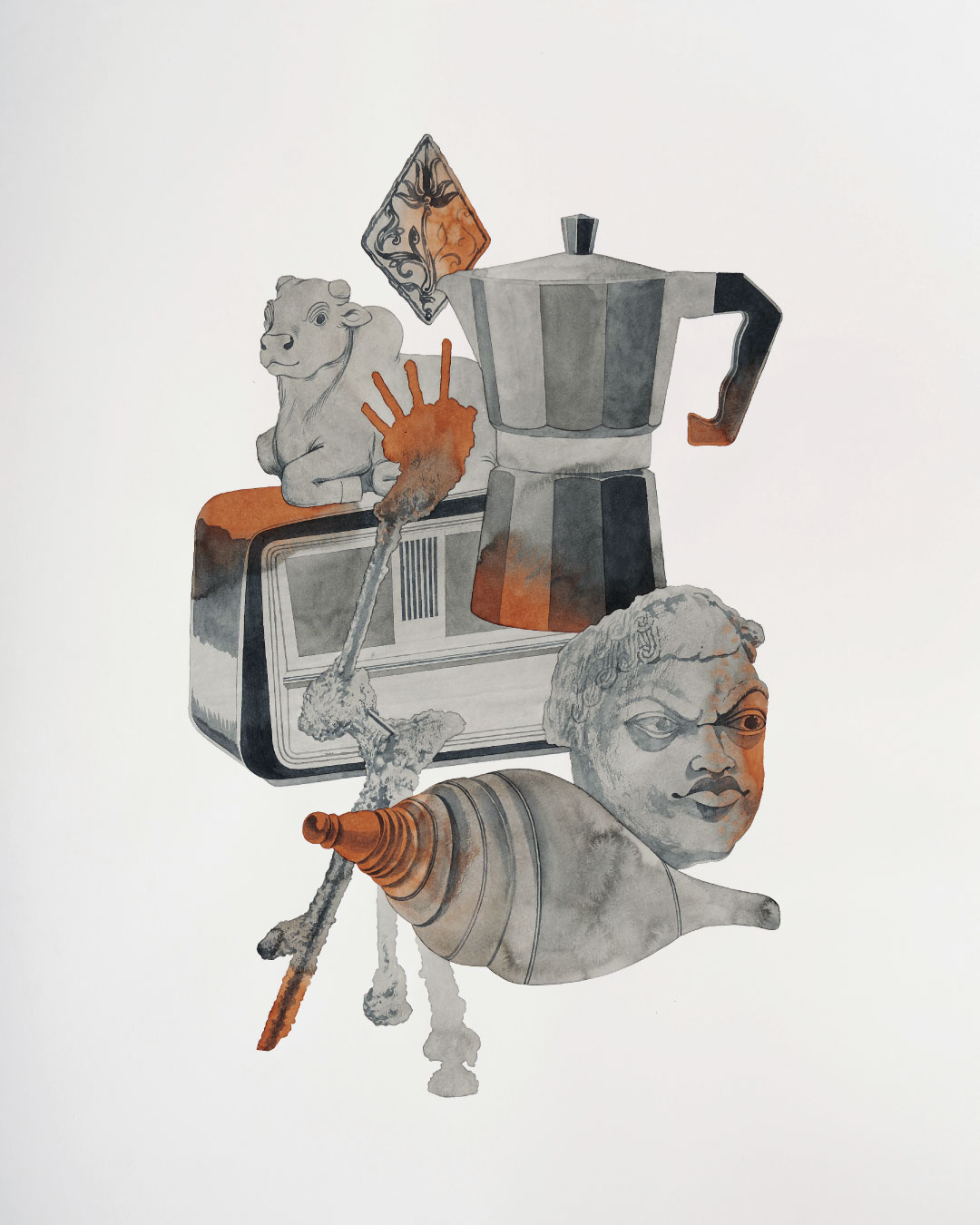Name Place Animal Thing
Title: Name Place Animal Thing
Medium: Soft body and Fluid acrylic paints on Fabriano Artistico acid-free cold-pressed paper
Size: 25.5 inches X 35.5 inches (small) Size: 55.5 inches X 71.5 inches (large)
Year: 2025
Name Place Animal Thing was exhibited at ‘LIMITS OF THE TOWN…’, Kulavoor’s solo show curated by Tasneem Zakaria Mehta at Dr Bhau Daji Lad Museum, Mumbai, between 11th Nov and 28th Dec 2025.
All photographs by Anil Rane, courtesy of Dr. Bhau Daji Lad Museum.
This series of paintings explore the idea of value through imagined still-life compositions that merge personal and institutional objects. Drawing from museum archives and personal belongings, Sameer Kulavoor examines how meaning is shaped by provenance, sentiment, and cultural context. Playing with scale and symbolism, the works reflect on how these objects move freely across time, space, and geography, carrying layered histories and interpretations.
The works build on his fascination towards the genre of still life, tracing back to his work, This is Not a Still Life for the India Art Fair facade in 2019. The compositions also quote objects from archives of museums such as The Dr. Bhau Daji Lad Museum, The British Museum, M+, V&A, MAP Bangalore, MoMA and The Met. Obscuring the idea of value further, he juxtaposes objects from his own collection such as a little elephant toy from Helsinki, and the ‘black elephant’ award he won in Kyoorius Designyatra 2014.
Kulavoor further plays with scale to flatten the sense of hierarchy when value is attached with the objects. For example, Aquasaurus (2008) , Jitish Kallat’s work shown at the Dr. Bhau Daji Lad Museum and a pot are shown in the same scale. It also points at how these objects and knowledge travel the limits of towns and geographical confines particularly.
All images and site content copyright ©️ 2010-2022 Sameer Kulavoor.
